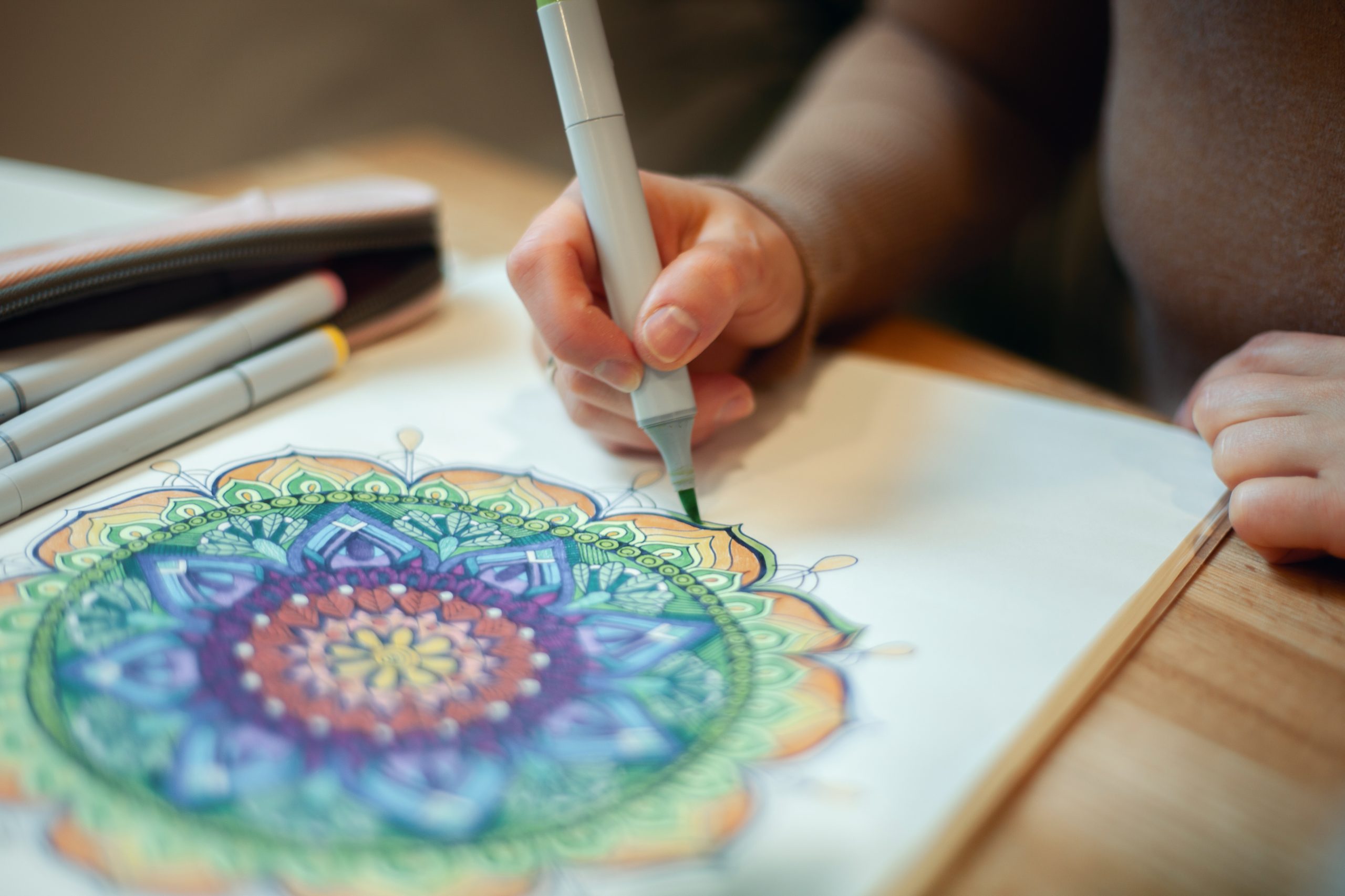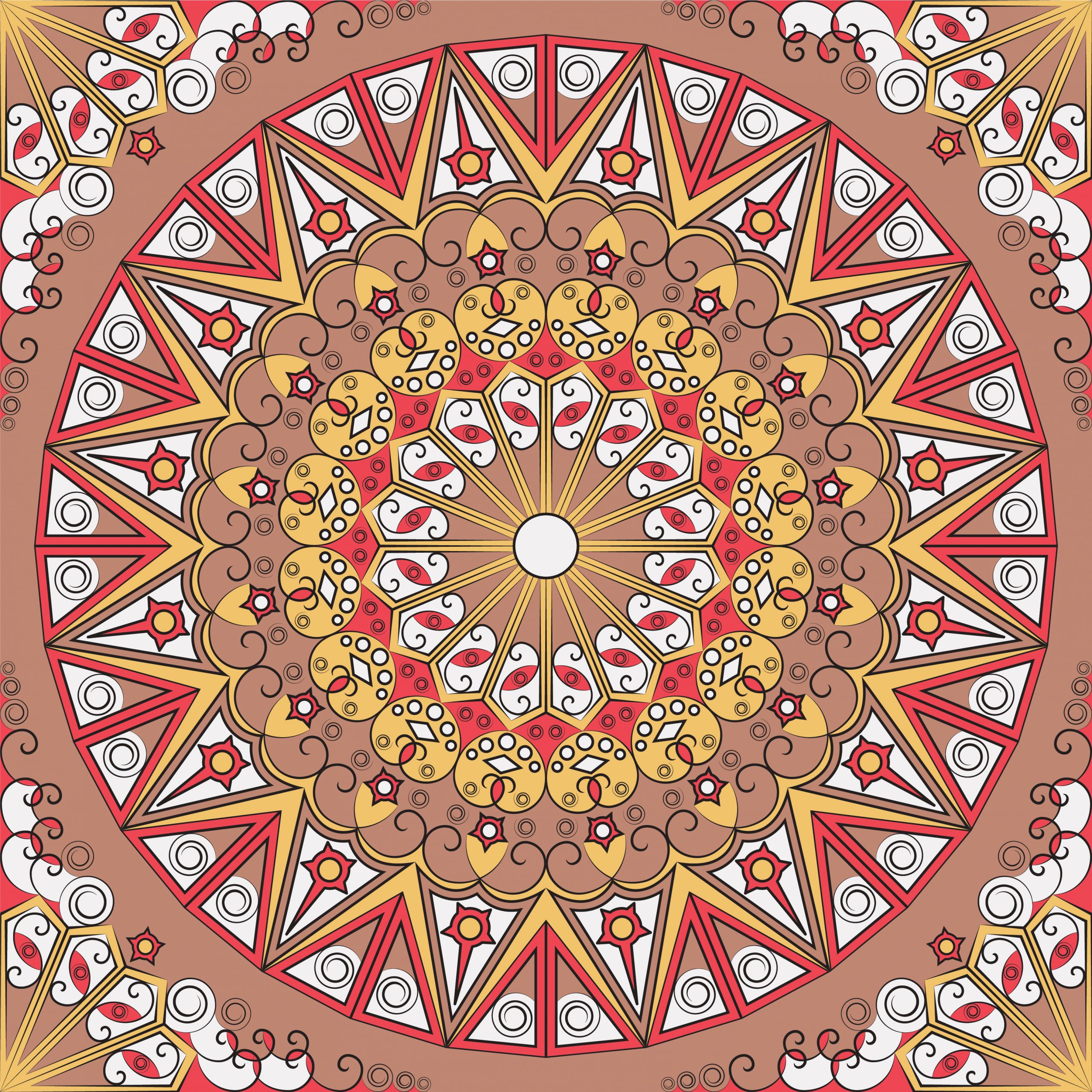
Does Mandala Colouring Help with Dementia
People with dementia experience memory loss. In recent decades several attempts have been made to enhance human memory performance. Some variables scientists proposed to contribute to retrieval operation are brain games and apps, word games, and colour.
Many scientists believe that colour is the most important visual experience for human beings and significantly enhances memory performance. So, this article dives deeper into colouring for dementia and “how mandala colouring helps with dementia”?
Contents
- 1 An Introduction to Mandala Colouring
- 2 The Relation between Colour and Memory Performance
- 3 Colouring and Dementia: Colour’s Effect on Memory
- 4 Health Benefits of Mandala Colouring
- 5 Benefits of Colouring for Dementia
- 6 Best Mandala Colouring Books for Seniors with Dementia
- 7 Best Colouring Apps for Dementia Patients
An Introduction to Mandala Colouring
Mandala is a Sanskrit word that means “circle.” Each mandala has its own specific story based on an individual journey. Mandala colouring is considered a meditation activity and art therapy to relieve stress and increase focus.
The Relation between Colour and Memory Performance
Scientific studies show that colour can increase human attention span. For example, a study showed that people who looked at coloured and gray-scale neutral scenes had 5% higher recognition of coloured pictures compared to gray-scale ones.
In another study, scientists proved a clear advantage of colour on visual memory. The researchers tested the colour recognition of participants for the duration of 50 milliseconds to one second. They found that people had 5 to 10% better performance on colour pictures than on black and white pictures.

Colouring and Dementia: Colour’s Effect on Memory
Based on the researchers’ opinions, the effectiveness of colour on memory performance depends on several factors. These factors are:
1. The Consistency of the Colours
The consistency of the colours helps the encoding and retrieval phases. This means that people used paint they’ve seen before to memorize things at the time of retrieval. This finding showed a close relationship between encoding stuff in memory and recovery.
2. Combination of Colours
The combination of colours is essential because they can produce a higher contrast level (as in the background or foreground). In general, the higher contrast of colours can attract more attention and better staff visibility. For example, white background with black foreground produces a better contrast level for short-term and long-term memory retention.
Health Benefits of Mandala Colouring
As mentioned above, mandala colouring has several health benefits as follows:
Relieve Stress and Anxiety
Colouring can relax the amygdala, the fear center of your brain. Its stress-relieving effect act as a meditation activity by reducing restless thoughts in your mind. It allows your mind to get more rest.
Improve Vision
Mandala colouring requires two brain hemispheres to communicate. The logic hemisphere helps you stay inside the lines while choosing the colour, provoking a creative thought process. More precisely, mandala colouring is not a passive activity; you need to select colours creatively. While you focus on not going over the lines, the other hemisphere is freed up and allows you to become more creative. Additionally, holding soft pens helps you enhance finger flexibility and hand-eye coordination.
Better Sleep
Mandala colouring before sleeping helps you to have a deeper sleep. This mediative-like activity is an electronic-free bedtime ritual that doesn’t affect melatonin levels. Melatonin is a brain hormone that regulates the circadian rhythm of sleep.
Enhance Focus and Concentration
Colouring inside the lines needs you to stay focused, which opens your frontal lobe. It can also help you get organized. This activity allows you to put everything aside and live in the moment, generating focus.

Benefits of Colouring for Dementia
Since scientists have confirmed the effect of colour on memory, some experts suggest that colouring like a mandala may benefit dementia disease. Mandala colouring is a very distracting and calming activity. According to some experts, it can be as effective as meditation for people with dementia.
In general, any activity that requires you to focus on the task at hand can be beneficial for dementia. Such activities also include brain games and word games.
Additionally, since mandala colouring is a stress-relieving activity, it can help seniors remember things. Results of a study in 2009 showed that doodling (which is an activity similar to colouring) allows seniors to recognize things better. Some caregivers also believe that the repetitive nature of colouring helps with agitation or aggression, two common symptoms of dementia.
The other valuable aspect of mandala colouring is its flexibility. People of any age, ranging from kids to seniors, can enjoy it. Grandparents can colour mandalas with their grandchildren. Such interactions with the younger generation may be beneficial for seniors with dementia.
It is difficult for people with dementia to focus since the world around them is confusing and distracting. A mandala colouring book can give them a purpose and relieve confusion for a while. Mandala colouring helps the brains of seniors with dementia stay active, which could slow down the progression of this disease.
Although solving crosswords and puzzles helps seniors focus, mandala colouring has added the benefit of art therapy. Colours allow memory to recognize things better. Besides hardcopies, you can find colouring apps for dementia patients.
Best Mandala Colouring Books for Seniors with Dementia
When it comes to choosing the best mandala colouring for dementia patients, you should:
Understand the Person’s Needs
Before choosing a mandala colouring for dementia patients, you should know about their visual acuity, concentration level, motor skills, and interests.
Choose Simple Patterns
Colouring should be a relaxing activity for people with dementia. Thereby choosing a complex mandala image that requires great attention to detail and skill is not appropriate. The best option is simple patterns and larger designs to avoid complicated details.
Choose a Large Mandala Design
Large mandala colouring books with bigger spaces prevent unnecessary strain on eyes and are better for seniors who have hand control issues. Images should also have thick, dark lines to colour within easily.
Choose a Book With One-Sided and Thick Pages
Books with thick papers and one-sided images prevent ink bleeding and make them suitable for marker pens.
Choose Meaningful Images
Choosing a mandala colouring design based on love and joy is also essential. For instance, if your loved one finds joy in gardening, selecting an image of plants can spark their memories. Nostalgic images like a particular food or location can specifically promote reminiscing.
Best Colouring Apps for Dementia Patients
Colouring apps for dementia patients have numerous benefits, and you don’t always need to buy hard copies. A touchscreen device like a smartphone or an iPad can often be a great help to people with dementia. Below is a list of the five best colouring apps for dementia patients available:
- Recolor
- Pigment
- Ocean Coloring Book!
- Color Therapy
- Colorfly
Final Words
Mandala colouring is recognized as an effective way to prevent dementia progression. This activity keeps seniors’ brains active and helps them remember things better. In addition, colour positively affects human memory and helps it memorize things and events faster.
As someone whose loved one has dementia, I found this article interesting. It’s great to see that something as simple as mandala coloring can positively impact those with dementia, particularly when it comes to reducing anxiety and improving mood; this is an excellent reminder that sometimes the simplest things can make the most significant difference, and I’ll be incorporating mandala coloring into my loved one’s care routine.
I was skeptical when I first heard about the benefits of mandala coloring for dementia patients, but after reading this article, I’m convinced. The science behind the practice is fascinating, and it’s clear that there are real, measurable benefits to incorporating mandala coloring into dementia care. I think it’s vital that we continue to explore these types of non-pharmacological interventions for people with dementia, as they have the potential to improve quality of life in a meaningful way.